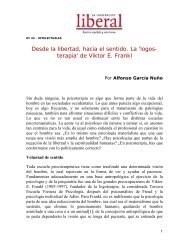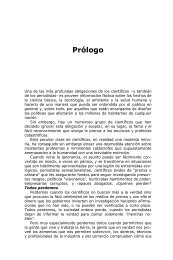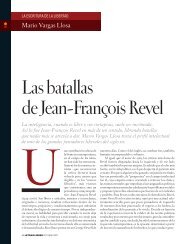Darfur: Blueprint for Genocide - Archipielago Libertad
Darfur: Blueprint for Genocide - Archipielago Libertad
Darfur: Blueprint for Genocide - Archipielago Libertad
Create successful ePaper yourself
Turn your PDF publications into a flip-book with our unique Google optimized e-Paper software.
Africa, and to the mov ement of Arab militias, originally sent<br />
from Libya to fight inChad, who fled into <strong>Darfur</strong>.<br />
At this time an Arab supremacist ideology in <strong>Darfur</strong><br />
emerged, espoused by the Arab Congress, which<br />
marginalises and dehumanises Africans. 15<br />
Ev idence suggests that the Arab Congress was covertly<br />
active as early as 1980/1. At this time cassette recordings<br />
calling the Arabs in <strong>Darfur</strong> to prepare themselves to take<br />
ov er the then regional Gov ernment were w idely<br />
distributed. Having classified the citizens of <strong>Darfur</strong> as<br />
either Arabs or ‘Zurga’ Blacks, the speakers told listeners<br />
that the Zurga had had enough time ruling <strong>Darfur</strong> and that<br />
it w as time <strong>for</strong> the Arabs to take power in the region. They<br />
also demanded that the name of the region should be<br />
changed from <strong>Darfur</strong>, meaning land of the Fur, to<br />
something more suitable. Soon after the distribution of<br />
these tapes in 1982, the first massacre of Fur took place in<br />
Aw alvillage in <strong>Darfur</strong>. 16<br />
In 1980 the Nimairi Gov ernment broke with tradition in<br />
<strong>Darfur</strong> by appointing a governor to <strong>Darfur</strong> w ho w as not<br />
nativ e to the region, an Arab from Kordofan. There was<br />
considerable public protest, w hich <strong>for</strong>ced the Gov ernment<br />
to replace the governorwith Ahmed Diraige, a nativ eFur.<br />
2.5.2 Arab Congressletter to the Prime Minister: 1987<br />
The proponents of this ideology of Arab supremacy openly<br />
emerged in October 1987 in a letter sent to the Sudanese<br />
Prime Minister, Sadiq al-Mahdi, attributing to the ‘Arab<br />
race’ the ‘creation of civilisation in this region … in the<br />
areas of governance, religion and language’.<br />
The letter w as distributed widely in <strong>Darfur</strong> and Khartoum.<br />
Its tone w as supremacist and drew upon the stereoty pe<br />
popular among Arabs of Africans as being of low cultural<br />
status.<br />
The salient points of the 1987 letter to the Prime Minister<br />
are as follows:<br />
1. The Arabic tribes have been present in <strong>Darfur</strong><br />
since the 15 th Century. They represent a coherent<br />
and well defined group in spite of the fact that they<br />
are organized into various tribes. The Arabs<br />
represent about 70% of the population of <strong>Darfur</strong><br />
and about 40% of the educated <strong>Darfur</strong>ians. They<br />
are responsible <strong>for</strong> 90% of <strong>Darfur</strong>’s gross income<br />
and 15% of Sudan’s GDP. The Arabic tribe of<br />
<strong>Darfur</strong> had 14 MPs in the Parliament of Khartoum.<br />
15 The Arab Congress is also referred to as the A rab Gathering,<br />
Arabic Gathering, Quraish & Gureish.<br />
16 Ferseldin, A. (2004). “ Devils in Disguise” (unpublished essay).<br />
Section 2: <strong>Darfur</strong> and the Ideology of Sudan<br />
2. For all these reasons, the ‘Arab Gathering’<br />
requested, in their letter to the Prime Minister, to be<br />
represented by at least 50% of all constitutional<br />
posts in the regional Government of <strong>Darfur</strong> and a<br />
similar percentage in the central Government in<br />
Khartoum. The ‘Arab Gathering’ warned against<br />
ignoring the predominant Arab tribes. To ignore<br />
them would lead to dire consequences <strong>for</strong> <strong>Darfur</strong>,<br />
the letter concluded. 17<br />
A translation of the full letter can be found in Appendix D.<br />
The signatories to this letter w ere leaders of a number of<br />
Arab tribes in <strong>Darfur</strong> who called themselves the Arab<br />
Gathering. Their names are listed below:<br />
1. Ahdallah Ali Masar<br />
2. Sharif Ali Hagar<br />
3. Ibrahim Yagoub<br />
4. Hussein Hassan El Bash<br />
5. Hamid Bito<br />
6. Taj Al din Ahmed El Hilo<br />
7. Ayoub Balola<br />
8. Mohamed Khof El Fadi<br />
9. El Nazir El Hadi Eisa Dabka<br />
10. El Tayeb Abu Shama<br />
11. Sindka Dawood<br />
12. Haroun Ali El Sanousi<br />
13. Suliman-Abkr<br />
14. El Nazir Mohamed Yagoub<br />
15. Zakria Ibrahaim<br />
16. Mohamed Zakria Daldoum<br />
17. Dr. Omer Abdelgabar<br />
18. Abdullah Yahya<br />
19. Hamid Mohamed Khir Alla<br />
20. Abdel Rahman Ali<br />
21. Mohamed Shiata Ahmed<br />
22. Abu Bakr Abu Amin<br />
23. Jabir Ahmed<br />
2.5.3 Arab Congressdocuments<br />
In November 2003 a group called the Political Committee<br />
visited a number of councils in South <strong>Darfur</strong>. The Political<br />
Committee was apparently under the authority of the<br />
Coordination Council of the Arab Congress. The members<br />
of this committee w ere well known in <strong>Darfur</strong>. Some of<br />
them held important positions in the Government and<br />
National Congress. 18 The recommendations resulting from<br />
these meetings are listed below.<br />
17 This analysis was taken from a research document sourced from<br />
the <strong>Darfur</strong> Centre <strong>for</strong> Human Rights and Development,<br />
a_ismel@yahoo.co.uk, November 2004.<br />
18 Ferseldin, A. (2004). “ Devils in Disguise” (unpublished essay).<br />
10




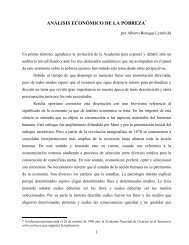
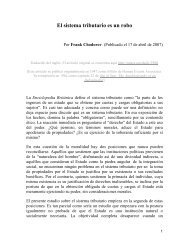
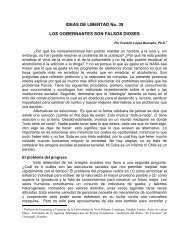
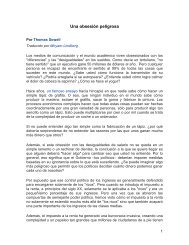
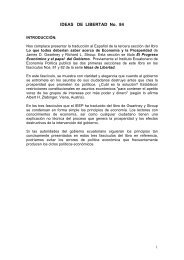


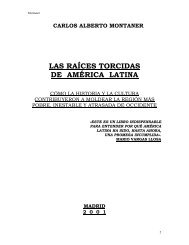
![0091 Stewart - La magia y el misterio del comercio [parte I].pdf](https://img.yumpu.com/16943279/1/169x260/0091-stewart-la-magia-y-el-misterio-del-comercio-parte-ipdf.jpg?quality=85)
